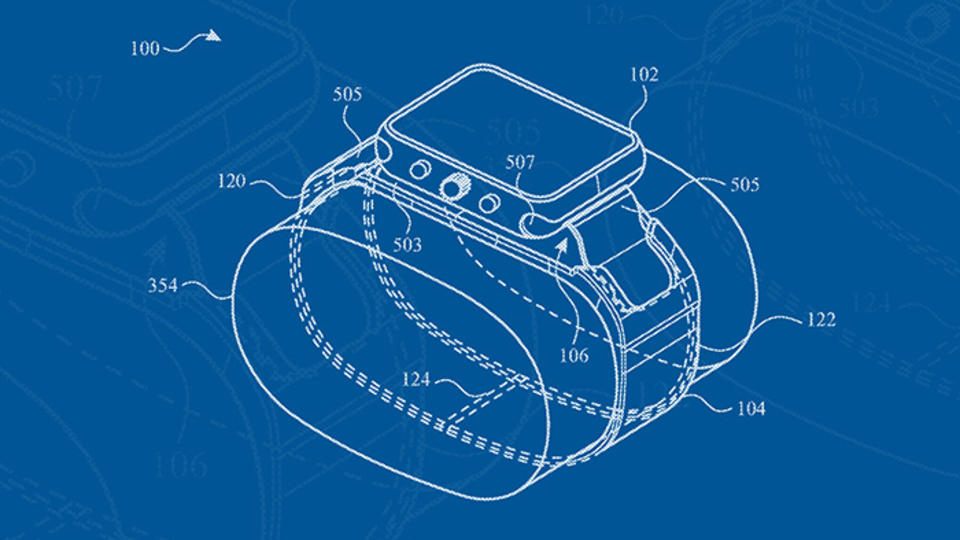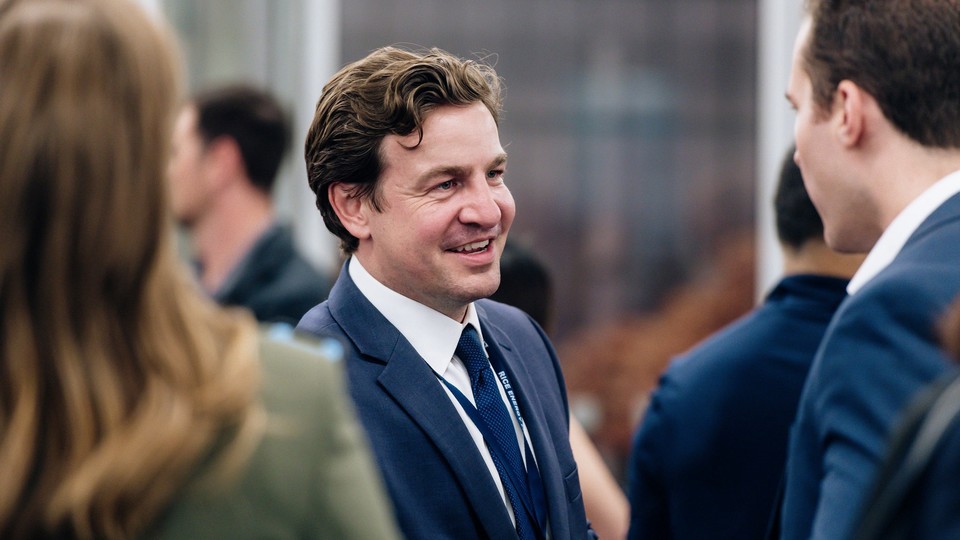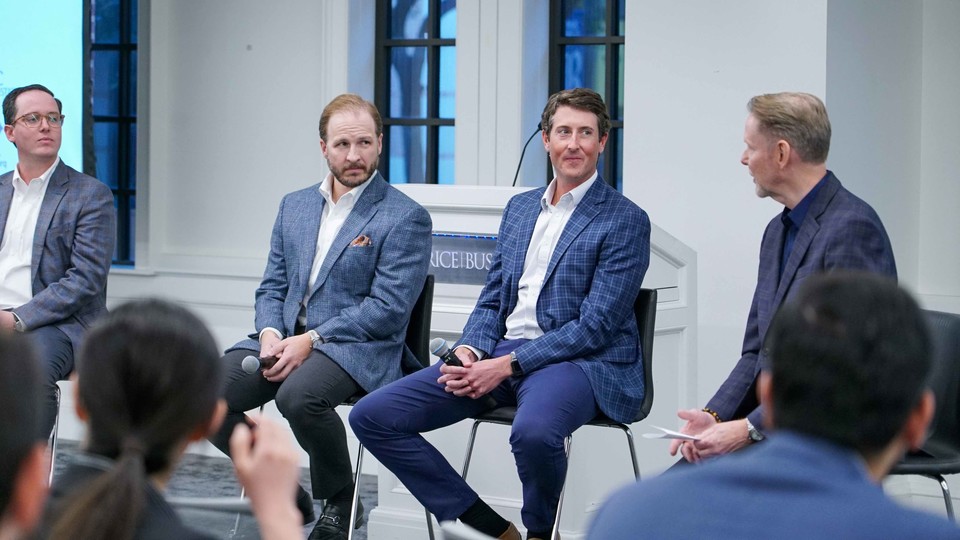Why Corporations Are No Longer Reluctant To Take A Stance On Social Issues
“Increasingly what we’ve seen is that individuals working for organizations, especially organizations with big platforms, whether they be sports teams are probably the most prominent example, (…) are increasingly willing to speak their minds,” Scott Sonenshein, management professor at Rice University’s Jones Graduate School of Business, told News 88.7.
Do As I Do
What does it really take to be an entrepreneur?


Based on research by Robert E. Hoskisson (George R. Brown Emeritus Professor of Management), Jeffery Covin, Henk W. Volberda, Richard A. Johnson
What Does It Really Take To Be An Entrepreneur?
- Certain cognitive factors differentiate people who start new ventures from their more staid counterparts.
- Still unclear is whether entrepreneurs think differently overall, possess qualities that lend themselves to entrepreneurship or become catalyzed by the entrepreneurial role itself.
- Not everyone can have an entrepreneur’s brain, but more research might reveal how you can walk the walk.
The entrepreneur strides into a room of potential backers. Swathed in understated grey, she walks with assurance and chats in the cool, easy-going cadences of the leaders she plans to woo. But will an approach like this really affect the fate of her startup? And if not, what will?
A literature review by Rice Business emeritus professor Robert E. Hoskisson and colleagues Jeffry Covin of Indiana University, Henk W. Volberda of Erasmus University and Richard A. Johnson of Arnold & Porter offers clues to a vast range of questions about the entrepreneurs’ trade. It also outlines where research still falls short. What, for example, most influences a startup founder’s success? Is entrepreneurial triumph driven by innate ability or acquired skill? What’s the role of factors such as regulatory structures or an entrepreneur’s own work environment?
Traditional research, Hoskisson and his associates note, makes it clear that certain cognitive factors really do differentiate people who start new ventures from their more staid counterparts. And recent scholarship has traced how individual entrepreneurs decide to launch their startups and how they spot entrepreneurial opportunities. Still unclear, though, is whether entrepreneurs think differently overall, possess innate qualities that lend themselves to entrepreneurship or somehow become catalyzed by the entrepreneurial role itself.
More research could help answer those questions. Research is also needed to pinpoint exactly how the best entrepreneurs express their plans in order to sound legitimate enough to earn funding and support, Hoskisson’s group says. What the scholarship does show is that that the grey-clad entrepreneur with the easygoing patter knows what she’s doing: symbolic language, gestures and visual symbols all help create professional identity, emphasize control and regulate the emotions of a viewer. Setting, props, style of dress and expressiveness all count, and the more experienced the entrepreneur the more props she uses.
At the same time, no unified model fully explains how successful entrepreneurs gain their funding. Models range from the hyper-rational analysis offered by game theory to a stimulus-response model in which people react as if they’re marionettes. Other mysteries include how the entrepreneurship impulse arises, how it shapes innovation and competitive advantage and how it is translated in individual actions and interactions. More research in these areas, says Hoskisson, would help not only entrepreneurs in the eternal quest for funding, but also the understanding of how to nurture human potential.
Examining institutional differences among countries and how that affects entrepreneurship is also ripe for study. So far, entrepreneurship research has focused on individual attributes. But there’s a need, Hoskisson and his colleagues say, for scholars to connect the dots between startup success and political environments, rule of law, regulation and entrepreneurship.
The same goes for work on diverse contexts in emerging economies. In transition economies, China being one example, networks create political and social capital that allows special access and legitimacy. On the other hand, in those same countries ponderous bureaucracies and basic resource limitations can hamper entrepreneurial projects. Detailed understanding of such cultures will only get more urgent as ventures in emerging economies increase and companies that are “born global” proliferate.
Also on the research to-do list about entrepreneurs: the chances of securing funding in given emerging economies and the power — or frailty — of their intellectual property laws. Regulation, especially, plays a pivotal role in these countries, Hoskisson writes. The lighter the regulation, the more entrepreneurship flourishes, according to one study of 54 countries. On the other hand, countries blessed with a strong rule of law offer entrepreneurs more opportunities for strategic entry.
Understanding the entrepreneurial mind, and its interaction with the material world, isn’t simple. Consider the late Texas billionaire H. Ross Perot’s plan to send gifts to all POWs in Vietnam during the height of the Vietnam War. Unsurprisingly, the Vietnamese government announced that a gift delivery was impossible while Americans were bombing the country. Undeterred, Perot offered to rebuild anything the Americans had bombed. Rebuffed again, Perot chartered a plane to Moscow, instructing aides to deposit the Christmas presents, one by one, at Moscow post offices, addressed to Hanoi.
Amusing as it can be to hear about such entrepreneurial gumption, it may be even more useful to study entrepreneurship systematically. Not everyone can have an entrepreneur’s brain, Hoskisson’s review of research suggests, but good scholarship might be able to teach people how to walk the walk.
Robert E. Hoskisson is the George R. Brown Emeritus Professor of Management at Jones Graduate School of Business at Rice University.
To learn more, please see: Hoskisson, R. E., Covin, J., Volberda, H. W. & Johnson, R. A. (2011). Revitalizing entrepreneurship: The search for new research opportunities. Journal of Management Studies, 48(6), 1141-1168.
Never Miss A Story
Keep Exploring
Fed's Kaplan says he supported rate cut only if Fed signaled nothing further
“I was willing to support this action as long as, on the condition, that it was accompanied with a clear articulation that for the time being the setting of monetary policy was, quote unquote, ‘appropriate,’” Kaplan told reporters after a talk at an energy conference run by Rice University’s Rice School of Business students.
Paving The Way
Thinking about a career change or want to accelerate your current career? The Rice MBA and our Career Development Office (CDO) will give you momentum, with top-quality personal guidance and carefully developed contacts with key employers and alumni.


Updated from original post that was published in 2019.
How The Rice Business Career Development Office Speeds Your Professional Journey
Thinking about a career change or want to accelerate your current career? The Rice MBA and our Career Development Office (CDO) will give you momentum, with top-quality personal guidance and carefully developed contacts with key employers and alumni.
Rice CDO offers students more time and more opportunities
Each full-time Rice Business student has the opportunity to meet with a career development team member and strategize options during five personalized advising appointments, compared with two appointments per student both at the University of Texas and at Wharton.
The outcomes speak for themselves. The ratio of companies-to-students that hire full-time Rice Business students is greater than at UT or Wharton. This is largely because the CDO staff is focused on rigorous service standards. For Rice MBA students, this focus on career development means there are more advisors per person, as well as frequent company visits to campus because companies actively target Rice for internships and full-time job recruiting, giving students a broad breadth of companies to consider.
And the strategy clearly works. In the class of 2024, 71 percent of students accepted offers through school-facilitated activities, with an average competitive starting salary of $150k. Top Rice Business graduate employers include: Amazon, AT&T, Deloitte Consulting, Bank of America Securities, JP Morgan and ExxonMobil.
Continuous contact with alumni builds a formidable network
To give a closer look at this high-energy career operation, we recently caught up with Jessica Campbell, Executive Director of the Career Development Office. Campbell had stopped in Washington, D.C. on the way home from the Week on Wall Street trek, a program in which Rice Business students meet alumni, recruiters and other business contacts at New York financial institutions. She was in Washington, D.C. to see alumni.
Year-round contact with alumni across the country, Campbell says, is a key strategy in building the formidable professional network for Rice Business graduates. The D.C. alumni Campbell was meeting work at Capital One, a financial services firm that had just finished a trial recruiting run with Rice Business. Campbell wanted to get first-hand feedback on how the trial had gone. Recruiting was so successful, Capital One added Rice Business as a core campus recruiting school.
The recruiting opportunities at Rice are striking not only for their abundance, but also for their variety, says Campbell. Rice Business attracts employers in the fields of
consulting, energy, financial services and technology. Recruiters from healthcare, real estate and telecom companies also frequent campus to meet prospective hires. Regardless of whether the economy is bullish or bearish, Campbell notes, Rice Business ensures its graduates will have a wealth of opportunities.
Interested in Rice Business?
Companies know Rice Business graduates will strengthen their businesses
Companies, for their part, recruit from Rice because they know its graduates will strengthen their business. With average full-time student GMAT scores around 700, the intellectual firepower at Rice Business makes it a compelling brand for recruiters.
They know Rice graduates can move through quantitative and qualitative frameworks to analyze and advise on business decisions. They also know that Rice Business prioritizes communication skills. Training includes communication coaches who work with each student on a personalized basis. As a result, Rice Business graduates are exceptionally adept at communicating and negotiating.
This versatility is highly prized, Campbell says. While recruiters want students who can wrangle complex data and analyze for key, actionable insights, they also need employees who can communicate across multiple levels within their organizations, as well as in diverse, global business environments.
To this point, Rice Business’ location – Houston– gives it an unparalleled advantage. Houston is both the most ethnically diverse city in the United States, and a thriving business center with Fortune 500 companies and a strong innovation ecosystem. Consequently, Rice Business students interact daily with people with diverse backgrounds and viewpoints. This range of experience offers Rice Business graduates a professional edge.
Houston’s cultural breadth gives students a competitive edge
With this in mind, the CDO team closely watches for opportunities to expand the school’s cultural capital. Promoting women in business is one example. For over 25 years, faculty and students have convened business leaders for the annual Women & Leadership Conference. To signal its support, the CDO is a sponsor. Campbell and her team also work with employers to identify gender compensation discrepancies and educate them on ways to mitigate them.
Taken together, the career team’s relationships with employers, alumni and practitioners all combine to give the CDO outsized effectiveness. And all of these relationships, Campbell adds, exist to serve Rice Business students. Give the CDO team a few weeks, says Campbell, and they will know your name. Give yourself four or five advisory meetings with them, and you can look forward to building your own relationships in the context of new, challenging work.
The Rice MBA offers comprehensive support for career development and career change.
You May Also Like
Marie Kondo Is Going To Tidy Up Your Workplace
Marie Kondo has another book in the works: “Joy at Work: Organizing Your Professional Life” to hit shelves April 7th, 2020. Working with organizational psychologist Scott Sonenshein, Kondo wrote a book to help you drain your life from redundant meetings, mounds of disorganized paperwork, a never-ending inbox and unnecessary tasks.
Gotta Have A Code
How does J&J credo hold up in a crisis?


By Tracy L. Barnett
How Does J&J Credo Hold Up In A Crisis?
It’s been three-quarters of a century since Robert Wood Johnson, an early chairman of Johnson & Johnson, penned what would become the gold standard of corporate social responsibility: Put the well-being of customers first.
The credo was famously tested in 1982, when seven people in Chicago died from ingesting J&J Tylenol capsules tainted with cyanide. The firm’s swift decision to reverse the supply chain for the first time in history, launching a total product recall, cost millions in the short run. In the long run, the decision became a textbook example of best business practices.
Now, as J&J faces a welter of crises based on asbestos in their iconic baby powder and their role in the national opioid epidemic, that code is being tested anew. And once again, business leaders are watching closely. During institutional crises like this, experts say, pre-existing moral norms are key to surviving.
“Only if you are truly an ethical organization can you preserve that type of reputation with this multitude of stakeholders,” Rice Business professor Anastasiya Zavyalova said. “Prior reputation and bonds with stakeholders, strength of marketplace position, and leaders’ immediate response are other factors. But especially in this day and age, the more you try to hide who you are, the harder it will hit you.”
If allegations are true that the company hid damaging research, “that’s the kind of thing that’s unforgivable,” agreed loyalty expert Chris Malone, co-author of The Human Brand: How We Relate to People, Products and Companies. “What we’ve found in our research is that customers can be very forgiving in a lapse of competence or ability or technical skill. But when you have a lapse of trustworthiness – when you are intentionally doing something wrong or covering something up — that will damage trust permanently and is very, very difficult to recover from.”
In the 21st century’s climate of diversification and decentralization, J&J’s credo may not have played as central a role throughout the company as it once did, Malone speculated. “There was a time, perhaps, looking in the rearview mirror, when that credo was more firmly and consistently practiced at J&J,” he said. “I think that has become less and less the case as they increasingly became a pharma and medical device holding company… it seems they’ve taken on the habits and practices of those industries more broadly, and as a result it has watered down the application of that credo.”
Harvard Business School professor Stephen Greyser, whose case study of the Tylenol episode is a business school classic, noted that the firm’s current crises look very different from that in the past – and as such may prompt a different response. “When a number of people are dying very quickly, as was the case with the Tylenol,” Geyser said, “that’s very different from finding small amounts of asbestos in a product where it’s not clear what the consequences are.”
For any business facing serious allegations, all three researchers agreed that a strong ethical code, practiced daily, is a critical tool for weathering crisis.
Building a culture with such a code has to start with recruitment and continues through training, Zavyalova said. “Organizations that have a strong backbone of ethical culture are actually less likely to have a crisis event,” she said. “But even when they do, they have the reputational cushion and strong culture that allow them to claim with a straight face: ‘this is an anomaly in our organization.’”
Greyser concurred, adding that this seemingly self-evident truth continues to elude corporate leaders. Citing recent ethical failures at Volkswagen, Wells Fargo and FIFA, he said, “One wonders whether it’s either an inability to read or an inability to grasp [past] examples … that lead companies not only to behave unethically – that can happen – but to stonewall, to deny, and to stretch it out in such a way that they really are blaming the victim.”
These continuing blind spots stem from the fact that ethics are still rarely talked about in corporate settings, argues author Adele Cehrs, a former crisis-management adviser for clients including Lockheed Martin, Verizon – and, at an earlier date, Johnson & Johnson. But when a company has a strong ethical position that it’s long made it clear to customers and employees, she said, “you can recover faster from a disaster by saying, ‘We’ve always had this underlying value – this crisis is not aligned with it, and here’s how we’re going to bounce back.’”
Starbucks is one company that got it right, Malone said, after a store manager called the police on two young black men waiting for a colleague. “For one thing, they immediately took responsibility and apologized,” he said. “It would have been very easy to say, ‘That was a rogue manager who made a decision that isn’t supported by any of our training or management policies.’ But they said, ‘We take full responsibility for this as an organization; we failed to have enough training or enough policies to prevent this.’”
He also praised Starbucks’ next step: inviting experts as well as critics to help design a training program, closing all stores and losing an afternoon’s revenue to put every employee through the new training. In addition to signaling that the company takes fighting racism seriously, Malone said, “they sent a message to their employees that ‘We’re not going to throw you under the bus.’”
Integrity, in fact, needs to be considered at every stage of business, said Bruce Weinstein, a speaker and consultant who is author of “Ethical Intelligence: Five Principles for Untangling Your Toughest Problems at Work and Beyond.” When he is advising companies, Weinstein said, he checks to see if their job descriptions include words like “honesty” and “courage.” Performance evaluations, too, need to explicitly rate character as well as competence, he tells clients. “It doesn’t matter how competent someone is in sales, marketing, HR, or IT,” Weinstein said. “You don’t want a single dishonest person at any level of your organization.”
To Cehrs, there are important lessons to be learned from J&J’s ongoing crises. In both the talcum powder and opioid cases, data was available to point to possible problems, she noted. “If you’re inside the company and you have a lot of this data, are the signs pointing to a potential crisis?” she said. “It is the job of the communications, marketing and legal departments to break down the silos and say: ‘I see the smoke; this could be an issue.”
But only putting employees in situations that mirror real-life crises can show how they will respond. This notion — that values-based protocols must be in place long before trouble strikes — is already foundational in many high-risk fields. “We don't rise to the level of our expectations,” Navy SEALS like to say: “We fall to the level of our training.” Or, in the words of Omar Little, iconic “hood Robin Hood” in the series The Wire: “A man gotta have a code.”
Businesses need a similar foundation, Greyser argued. “How important is it to have such an ethical framework in place in advance?” he asked. “I would say: How important is it to have a culture where doing the right thing is normal?”
Tracy L. Barnett is an independent writer based in Guadalajara, Mexico. She is the founder of The Esperanza Project and the author of an upcoming book on environmental initiatives in Latin America.
Never Miss A Story
You May Also Like
Keep Exploring
Base Of Operations
How data analysis has transformed baseball — especially the Astros.


By Jennifer (Jennie) Latson
How Data Analysis Has Transformed Baseball — Especially The Astros
Jimmy Disch is an associate professor of sport management at Rice, where he teaches a popular course called “Moneyball,” a reference to the 2003 book about Billy Beane’s use of sabermetrics — statistical analysis applied to baseball — to make the Oakland A’s a competitive team on a shoestring budget.
The Astros were early adopters in the sabermetrics revolution, and they continue to invest heavily in statistical analysis — and to apply its findings on the field. Take the defensive strategy of infield shifting, for example, which they use more than any other MLB team. Rice Business senior editor Jennifer Latson talked to Disch about how the field of sabermetrics has evolved, and how the Astros use it to their advantage.
Q: How has data analysis changed the way baseball is played?
A: Any sport is always looking for ways to modernize and become more competitive. One thing that’s been a major factor in baseball is that analytics has shown how shifting is a supreme advantage to the defense. Some players’ careers have been drastically affected by this, like [Los Angeles Angels first baseman Albert] Pujols specifically. Now that everyone’s shifting him, it’s a lot harder to get a hit.
As far as hitting styles go, the big thing now is launch angle — trying to develop a swing that helps you get the ball in the air more. That has increased the number of strikeouts for hitters, but it’s also increased the number of home runs.
Q: What are some examples of game-changing findings that a statistician was able to observe while a coach could not?
A: Recently, teams have started applying the data they have to trying to improve pitching styles. It used to be you really didn’t want to throw high in the strike zone, but now you’ve got pitchers doing what they call “tunneling,” where they can start their fastball up high. Then they can start their curve ball in the same “tunnel” and make it harder for the hitter to decide the type of pitch. In the old days, most coaches wanted the pitchers to keep the ball low and just work it in and out. But the Astros were ahead of that trend. [Astros pitching coach] Brent Strom has been preaching that for a long time, well before there were statistics to back it up.
Q: What are some surprising facts or anecdotes you share with the students in your “Moneyball” class?
A: When the Owls won the College World Series in 2003, we had a pitcher, David Aardsma, who went on to play professionally. After he left Rice to play, he took my sports analytics class. And for his final project, he took a scientific look at his best pitches in terms of outs. He hypothesized that his slider was his best out pitch against right-handed batters, and his changeup was the best for left-handed batters. The data showed that the slider was best for right-handed batters — but it was also the best for left-handed batters. If he’d known that earlier, he would have changed his approach.
Q: What do people tend to misunderstand about sabermetrics?
A: What I try to emphasize in my class is that you’ve got to start with a theory; you can’t just throw a bunch of numbers into an analysis and come up with something meaningful. It’s also not the case that sabermetrics is a replacement for scouting and coaching. Today you have a blend of analytics and traditional scouting. If the scouts and the numbers agree that a player is worthwhile, you draft him, and if they agree that he’s not, you don’t. But when the scouts say one thing and the numbers say another, that’s when you have to dig more deeply — you have to take a closer look.
Q: How has sports analytics changed in recent years, as technology has evolved? What are some of its newer applications?
A: Instead of player acquisition, the focus is now getting into the area of player development. Everything’s more quantifiable now; you know exactly the spin rate on pitches and how much the ball deviates. Improved video technology has given coaches and players tools where they can immediately analyze what just happened. But at the same time, all the low-hanging fruit is gone — all the easy answers have been found. So now you’ve got to really dig to find out what’s going on.
Q: Why hasn’t data analysis played as big a role in other sports?
A: Baseball has always been a sport that measured everything, but the fact that the pitcher puts the ball in play is what makes the difference. You always know where the ball’s going to start, and in order for something to happen, the batter’s got to put it in play.
Basketball is also highly analytic, and the Rockets are trendsetters in the NBA with data analysis, just like the Astros are trendsetters in the MLB. There’s also a lot in soccer, but there the scoring is so low that it’s hard to find valid predictors. In football, the size of the field and the nature of the beast makes it hard — there are still a lot of measures that aren’t predictable. A lot more comes down to coaching in football.
Q: Which do you think would be more helpful to the Astros: all the data in the world or Jose Altuve?
A: That’s a good question, because it goes back to the value of traditional scouting. All the numbers say no on Altuve. He’s too small; no one expected him to have nearly the power he has. But fortunately, one of our scouts looked at him and gave him a chance. They’d sent him home from tryouts, thinking he’d lied about his age because he was so little, but he got his birth certificate and came back and they let him play — and he was so skilled that they signed him. In the end, all the numbers can do is maximize the paradigms that you have to work from. You still have to use your judgement.
Never Miss A Story
You May Also Like
Keep Exploring
Double Dare
Why are male investors more inclined to take financial risks than female investors?


Based on research by Vikas Mittal, Xin He and J. Jeremey Inman
Why Are Male Investors More Inclined To Take Financial Risks than Female Investors?
- Men are more prone to take risks for personal financial gain than women, and women are more likely than men to take risks to protect themselves from financial loss.
- Past research suggests that women are more influenced by “communion” goals related to loss minimization and men are more influenced by self-oriented goals related to gain maximization.
- Male investors who believe they are highly capable are more likely to take a risk than female investors with the same belief about their own capability.
When motorcycle daredevil Evel Knievel leapt over cars, vans and fountains, it was little surprise that the person pulling those stunts was a man. That’s not to say women never partake in high-risk behavior (Danica Patrick, anyone?). But decades of research confirm that men really are more inclined to take risks (Byrnes, Miller, and Schafer 1999).
Snake River Canyon and the Indy 500 aside, economic life offers plenty of risk as well. When these risks involve investing, men under certain circumstances are more likely than women to take dangerous leaps (Jianakoplos and Bernasek 1998). But why?
Rice Businesses professor Vikas Mittal joined Xin He of the University of Florida and J. Jeffrey Inman of the University of Pittsburgh in three studies to examine why men and women engage in risky business. Specifically, the team wanted to test whether each gender’s risk-taking was moderated by a trait called issue capability: a decision-makers’ belief that he or she can solve an issue. (Mittal, Ross, and Tsiros 2002, p. 455).
The team grounded their work in agency-communion theory. This posits that men are more driven by goals that further self-interest (“agentic” goals) and women are more driven by goals that further coexistence (“communion” goals).
Based on this theory, the researchers hypothesized that men making investment decisions would take greater risks as their issue capability rose. This would occur because men, who are more focused on maximizing gains, would become more risk-seeking as their self-capability perceptions increased.
Conversely, the researchers theorized, women who faced similar investment decisions would focus on avoiding loss — even when their issue capability rose. This fundamental difference in investing perspective — men trying to maximize any gain versus women trying to minimize any loss – would be at the heart of a diametrically opposite stance on financial risk-taking.
All three studies proved the theory to be correct.
In the first study, the researchers asked men and women to wager money on Daily Double questions in “Jeopardy!” The male contestants with higher issue capability (i.e. demonstrated knowledge of the category) took the biggest risks. The women contestants showed equal levels of betting behavior regardless of whether they had high issue capability or not.
In the second study, the researchers dove into the psychology underlying gender and issue capability. First, the researchers primed male and female participants to believe they had either good or bad track records with risky investment decisions. Then they asked both groups to imagine they could invest $20,000 at varying levels of risk.
When it came to investing for gains, the researchers found, the women’s beliefs about their issue capability made no real difference in their financial choices. Even after they had been primed to think they were highly capable investors, the women participants were less prone than the men to focus on the upside potential.
And the men? Those who believed they were “capable” made the riskiest investment decisions. They also reported the highest number of thoughts about the positive potential of the various investment scenarios. Statistical analysis proved that these gain-maximization thoughts egged them on in their risk-taking.
On the other hand, those male participants who weren’t primed to feel capable showed risk-taking patterns identical to that of the female participants. The results, in other words, suggest that the key difference between men and women’s risk-taking is not innate — but stems from their self-conviction in investment competence.
The third study examined these processes in yet another way, by giving female and male participants the chance to maximize gains through making investments in stocks, or to minimize losses through buying insurance. Once again, the men primed to see themselves as ace investors made the riskiest investments. The women who felt themselves especially capable kept their risk-taking steady.
The women’s behavior only changed when they thought they were subpar investors. When both women and men were told they were stock market duds, the women were more likely than the men to buy insurance — in other words, to take traditional measures to defend against loss.
Risk-taking choices, in other words, can no longer be written off as just boys being boys or girls being girls. More accurately, boys will be boys when a male investor thinks he is especially capable and that taking a risk will benefit him personally. That’s not always a good thing. A female investor, who will typically focus on minimizing potential loss, can contribute a lot to investing decisions. Taking a big risk, as many an investor knows, isn’t always the best move.
Mittal’s findings inspire a list of possibilities for future research. What will happen to these behaviors as more women assume leadership jobs and more men get to show their skill as caregivers? Should senior management teams have both male and female representation to balance out the upsides and downsides of investment decisions? What about at home: Would household decisions change for the better if both the man and the woman contributed their perspective?
Vikas Mittal is the J. Hugh Liedtke Professor of Marketing at Jones Graduate School of Business at Rice University.
To learn more, please see: Xin H., Inman, J. J., & Vikas Mittal (2008). Gender jeopardy in financial risk taking. Journal of Marketing Research, 45(4), 414-424.
Never Miss A Story
You May Also Like
Keep Exploring
The World's Best MBA Programs For Entrepreneurship
In the debut of an inaugural ranking, Rice Business claims the #11 spot among the world's best entrepreneurship programs.
Meet The Most Disruptive MBA Startups Of 2019
MBAs were behind some of this decade's most lucrative startups, including Rice Business alum Vinay Acharya '19. The Class of 2019 has more in the works. Check out this year's most promising MBA startups.













